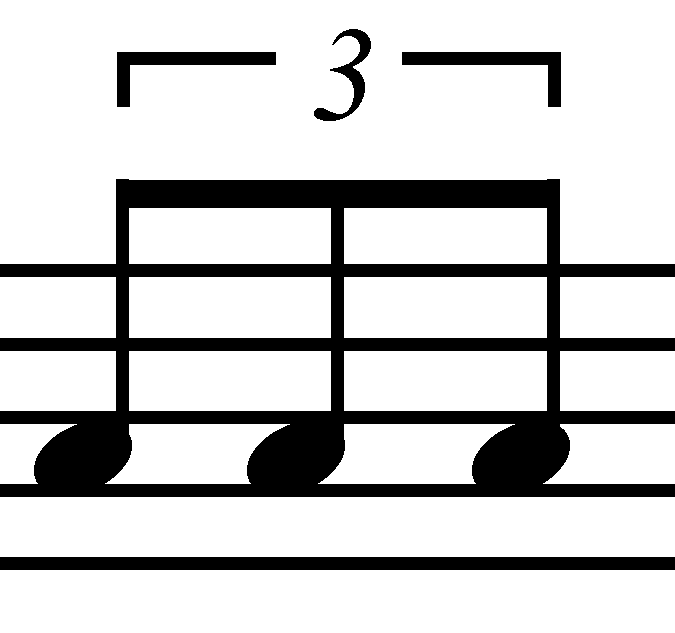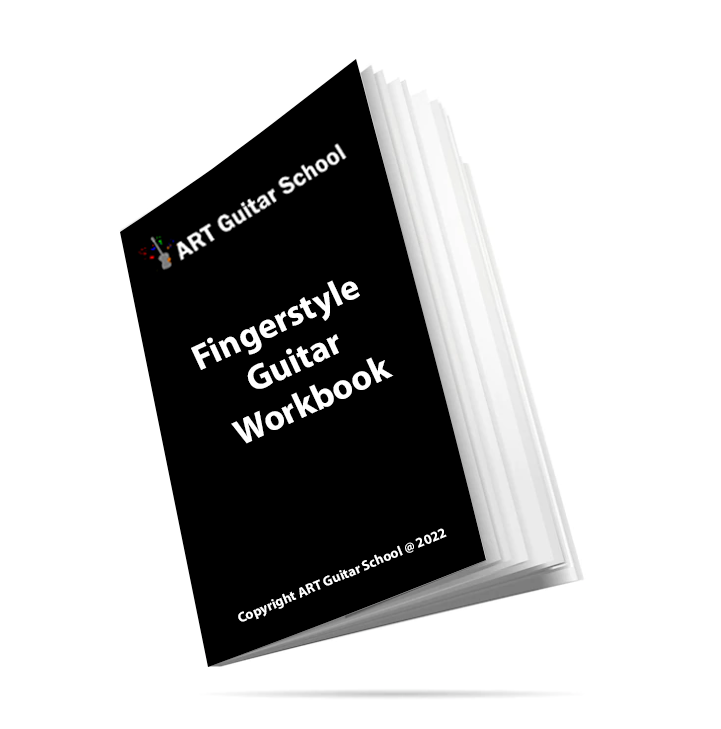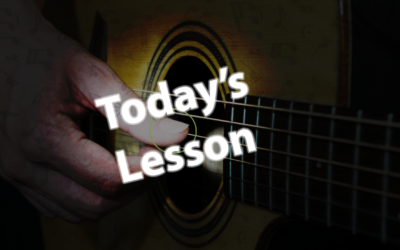One of the most common questions in regards to rhythm is how to play a triplet picking pattern. In order to do so you must first understand how a triplet works.
A triplet is split evenly into three parts within a quarter note. It’s like squeezing 3 eighth notes into one beat however, the duration of each is now slightly shorter due to the limited amount of time to fit each note within that beat.
Rhythm #1
Here is a quarter note pattern to start with. Pluck each note as one beat.
We added a half note at the end to fulfill the measure.

Rhythm #2
Now let’s try an eighth note pattern. Pluck two notes for each beat. They must fit evenly within the quarter note on the down and up beats.

Rhythm #3
Finally, this is the triplet pattern. I would recommend started by plucking only the first string with this rhythm. Count the rhythm as “one and ah, two and ah”.

Here is a video on popular finger picking patterns to start with:
If you were having trouble making the trip it’s even within the beat try using a metronome set a quarter notes 40 BPM and practice playing three notes within each beat.
FOLLOW US ON
Get our FREE Fingerstyle Workbook!
RELATED BLOG POSTS
Getting Started: Choosing Your First Guitar
Choosing your first guitar is an exciting yet daunting task. With countless options available, it’s crucial to find an instrument that suits your style, budget, and comfort level. The first decision you’ll need to make is whether to go for an acoustic or electric guitar.
Acoustic Guitars: These are fantastic for beginners due to their simplicity. You don’t need an amplifier, and they’re perfect for playing at home or in small gatherings. Look for a model with a solid top; this will enhance the sound quality as you play. Brands like Yamaha and Fender offer great entry-level options that won’t break the bank.
Electric Guitars: If you’re drawn to rock, pop, or blues, an electric guitar may be the way to go. While they often require additional gear like an amplifier and cables, they provide a wide range of sounds and effects. Consider starting with a beginner-friendly model from brands like Squier or Epiphone.
Size and Comfort: Regardless of the type, the guitar should feel comfortable in your hands. If possible, visit a music store to try different models. Pay attention to the neck size and body shape—these can significantly affect your playing experience.
Budget: Set a budget that allows for not just the guitar but also some essential accessories. A good starting point for a decent beginner guitar is anywhere from $150 to $500. Remember, you can always upgrade later as your skills improve.
Accessories: Don’t forget to invest in a few essential accessories. A tuner, picks, a strap, and a case will help protect your guitar and enhance your playing experience. Additionally, consider getting a guitar stand to keep your instrument safe when not in use.
Lastly, remember that your first guitar doesn’t have to be perfect. It should inspire you to play and enjoy music. So take your time, do your research, and choose an instrument that speaks to you. Happy playing!
Fingerstyle Guitar for Beginners: Essential Exercises to Build Dexterity and Accuracy
Building dexterity and accuracy is crucial for fingerstyle guitar. In this post, we will outline essential exercises that every beginner should practice to strengthen their fingers and improve overall technique.
Finger Strengthening Exercises Start with simple exercises that target each individual finger. For example, practice plucking the strings one at a time, focusing on controlled, clean movements. The goal is to build strength in your fingers so they can work independently and efficiently.
Thumb and Finger Coordination A key component of fingerstyle guitar is thumb and finger coordination. Practice alternating between your thumb and fingers, ensuring that your thumb stays steady on the bass strings while your fingers work the melody.
Using a Metronome To develop precision, practice with a metronome at a slow tempo. Gradually increase the speed as you get more comfortable with the exercises, ensuring accuracy with each note.
Stretching and Relaxation Lastly, it’s important to stretch your fingers before and after practice to avoid tension. Fingerstyle guitar requires flexibility, so keep your hands relaxed to prevent strain or injury.
Fingerstyle for Songwriters: How to Use Guitar to Enhance Your Compositions
Fingerstyle guitar can be a powerful tool for songwriters. This post will discuss how to use fingerstyle techniques to enrich your songwriting and help bring your songs to life.
Why Fingerstyle Guitar Enhances Songwriting Fingerstyle guitar allows you to create intricate and rich accompaniments that support both melody and harmony simultaneously. This can transform a simple chord progression into something more dynamic and engaging.
Combining Melody and Harmony Start by selecting a simple chord progression. Then, try incorporating the melody into your fingerpicking, adding small flourishes and embellishments. The key is to balance the melody with the bass and chords in a way that complements your song’s emotion.
Using Dynamics in Fingerstyle Manipulating dynamics (volume and intensity) is another powerful tool in songwriting. Use fingerstyle to create softer verses and more intense, louder choruses for emotional contrast within your song.




0 Comments